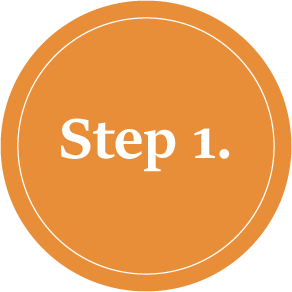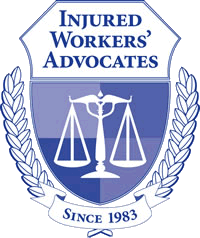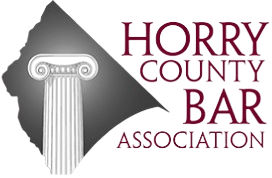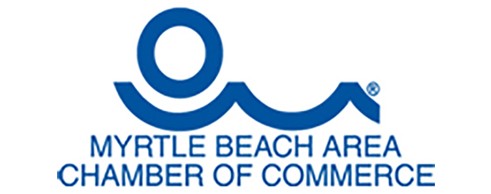Myrtle Beach Bankruptcy Lawyers
With Law Offices in Myrtle Beach, North Myrtle Beach, and Litchfield
With Law Offices in Myrtle Beach, North Myrtle Beach, and Litchfield
Do You Need Legal Help?

Reach Out to Our Attorneys

We Help You Fight Your Charges

Get Your Life Back on Track







Learn what you should and shouldn't be doing to help your bankruptcy case in South Carolina. Submit your information below to download our free PDF Guide.
We understand that the legal system is not set up in favor of defendants or plaintiffs. That is why we have shaped our entire practice to be client-centered and compassionate. Our lawyers take special care to explain the court process and ensure that clients feel heard and understood.
![]()
During this most difficult period of time in my life, Margaret Evans and the staff assisted me during my divorce. I needed legal counsel which was provided professionally and efficiently. Thank you for your prompt and courtesy service to me.
![]()
Made the home closing process quick and easy! We appreciated their quick and clear communications, especially since our closing was over the holidays.
See what our clients have to say about our law firm and the people who are a part of it.
Bankruptcy is a legal process that allows individuals or businesses to seek relief from overwhelming debt. Whether you are struggling with personal finances or a business facing financial difficulties, bankruptcy may provide a fresh start. For those considering bankruptcy in Myrtle Beach, SC, it’s important to understand how it works and how it can impact your future.
At its core, bankruptcy is a process that allows individuals or businesses to either discharge certain debts or reorganize them to create a manageable repayment plan. There are different types of bankruptcy, but the most common ones for individuals and businesses are Chapter 7, Chapter 13, and Chapter 11. Each type offers distinct benefits depending on the situation.
Chapter 7 is typically referred to as liquidation bankruptcy, where a court-appointed trustee sells off non-exempt property to pay creditors. This is often chosen by individuals or businesses with little to no assets or who cannot afford to pay off their debts.
Chapter 13 bankruptcy is for individuals with a regular income who want to keep their property but need a structured repayment plan. This type allows you to repay your debts over a period of three to five years based on what you can afford.
Chapter 11 bankruptcy is primarily used by businesses. It allows a business to continue operating while restructuring its debts and creating a plan to pay off creditors over time. This option is typically more complex and involves negotiating with creditors to reduce the overall debt burden.
For individuals, filing for bankruptcy can have a significant impact on both your finances and personal life. One of the immediate effects of bankruptcy is the automatic stay, which temporarily halts any collections efforts, such as creditor calls, wage garnishments, or foreclosure proceedings. This provides immediate relief and time to sort through your financial situation.
While bankruptcy can provide relief from debt, it is important to remember that it may also negatively affect your credit. A bankruptcy filing can stay on your credit report for several years, making it harder to obtain loans or credit in the future. However, many individuals find that bankruptcy offers a way to rebuild their finances, as it can eliminate unsecured debts like credit card balances and medical bills.
It is important to note that not all debts can be discharged in bankruptcy. For instance, student loans, child support, and certain taxes are usually not eligible for discharge. However, bankruptcy can still help create a manageable repayment plan for these remaining debts.
Businesses, whether small or large, can also benefit from filing for bankruptcy. When a business faces significant debt, bankruptcy can help by providing time to restructure operations and reduce obligations. This gives the business an opportunity to remain in operation rather than liquidating assets and closing down.
For small businesses, Chapter 11 bankruptcy allows the owners to retain control of the company while negotiating with creditors. This can help maintain employee jobs, supplier relationships, and the company’s overall presence in the market. In some cases, businesses may use Chapter 7 to liquidate assets and close down operations, but this is typically a last resort.
Bankruptcy can be an important tool for businesses to regain financial stability. However, businesses should carefully consider their options and the impact of filing on their long-term goals before proceeding.
If you are considering filing for bankruptcy, it is essential to seek professional guidance from a Myrtle Beach bankruptcy lawyer. Navigating the bankruptcy process on your own can be overwhelming and complicated. An experienced lawyer can help you understand your options, guide you through the paperwork, and ensure that you follow the correct procedures.
A bankruptcy lawyer will review your financial situation in detail, help you determine the most appropriate type of bankruptcy, and assist with gathering the necessary documentation for your case. They will also protect your rights by representing you in court and negotiating with creditors. A lawyer can help you avoid costly mistakes and ensure that you make the best decisions for your financial future.
At McCutchen Vaught Geddie & Hucks, P.A., our team of skilled Myrtle Beach bankruptcy lawyers are dedicated to helping individuals and businesses in the area find relief from financial hardship. We understand that each situation is unique, and we take the time to provide personalized legal guidance based on your specific needs.
Filing for bankruptcy can be a difficult and overwhelming process. Many individuals in Myrtle Beach find themselves uncertain about the steps to take and the potential consequences of their decisions. Unfortunately, people often make common mistakes when navigating bankruptcy that can negatively impact their future. At McCutchen Vaught Geddie & Hucks, P.A., we understand how complicated this situation can be and are here to help guide you through the process to ensure you make informed choices.
One of the most common mistakes people make when facing bankruptcy is delaying seeking legal help. Some individuals may attempt to handle their case on their own, thinking they can avoid the costs of hiring a lawyer or may simply not understand the importance of professional guidance. However, bankruptcy law is complex, and the process can be filled with nuances that could easily be overlooked by someone without experience. It’s crucial to consult with Myrtle Beach bankruptcy lawyers early on to avoid costly mistakes that could hinder your ability to recover financially.
Another mistake that many people make is not fully understanding the different types of bankruptcy available. Chapter 7 and Chapter 13 bankruptcies are the two most common options, but each has its own set of rules, benefits, and limitations. Some individuals may choose the wrong type of bankruptcy without realizing it could impact their financial future. For example, Chapter 7 bankruptcy might seem like a quick way to eliminate debt, but it may not be available to everyone. Consulting with a bankruptcy lawyer can help you understand which option is best for your unique situation.
In an attempt to reduce their debts or avoid losing property, some individuals may consider hiding assets or misreporting their income. This is a serious mistake that can have severe consequences. Bankruptcy fraud is illegal and can lead to criminal charges, along with the dismissal of your bankruptcy case. Being honest and transparent in your filing is essential for avoiding legal trouble and ensuring your bankruptcy process goes smoothly. A qualified bankruptcy lawyer can help you navigate this process honestly and correctly.
Many people facing financial struggles may believe bankruptcy is their only option. While bankruptcy is an effective tool for eliminating certain debts, it is not always the best solution. In some cases, other financial options, such as debt settlement or restructuring, may be a better fit. Failing to consider all available options could lead you to make a decision that may not be in your best interest. A skilled bankruptcy lawyer can help you explore all options and guide you toward the most appropriate solution for your financial situation.
After filing for bankruptcy, individuals must follow specific requirements, such as attending credit counseling and making required payments if they choose Chapter 13 bankruptcy. Failing to keep up with these obligations can cause serious delays in your case and could result in your bankruptcy being dismissed. It is important to stay on top of any required tasks and to make sure you understand your responsibilities after filing. Working closely with a bankruptcy lawyer will help you stay informed and avoid missing any important deadlines or steps.
How do you know what would type of Bankruptcy is right for you?
How does filing for Bankruptcy affect my ability to borrow in the future?
What is bankruptcy, and how does it work in South Carolina?
What is some of the benefits of Bankruptcy to a client?
This client story is for educational purposes only.
Daniel had always worked hard. For years, he had put in long hours at his job, hoping to provide a good life for his family. But somehow, things didn’t go as planned. Medical bills from an unexpected illness, car repairs that drained his savings, and credit card debt piled up. Soon, his debts became so big that he felt trapped, with no way out. Every time the phone rang, he dreaded seeing a bill collector’s name flash on the screen. The stress weighed on him, and the pressure was constant.
Daniel knew he needed help but didn’t know where to turn. One evening, after another long day of worrying, he stumbled upon the name of Margaret Evans, a lawyer with McCutchen Vaught Geddie & Hucks, P.A., in Myrtle Beach. He had heard that Myrtle Beach Bankruptcy Lawyers could help people like him find a way out of their debt, but he wasn’t sure if it would really work for him.
The next morning, he decided to call. When he spoke with Margaret, her calm and reassuring voice immediately put him at ease. She listened patiently to his story, never interrupting, and asked thoughtful questions about his finances. Daniel felt like someone understood what he was going through for the first time in months. He wasn’t just another case; Margaret treated him like a person, someone who deserved a fresh start.
Margaret explained the bankruptcy process step by step. She made it simple to understand, showing Daniel that there was a way to wipe out the overwhelming debt and begin again. She told him that bankruptcy wasn’t something to be ashamed of, but a tool that could help him rebuild his life. Her support gave Daniel the confidence he needed to move forward.
Working with Margaret, Daniel filed for bankruptcy, and the process was smoother than he ever imagined. Margaret handled everything, from the paperwork to the court hearings, ensuring that Daniel didn’t have to worry about the details. She even helped him understand how he could start rebuilding his credit after his bankruptcy was complete.
Months later, Daniel stood on the other side of his bankruptcy, debt-free. The phone no longer rang with collection calls, and he felt the weight of stress lift from his shoulders. He could breathe again. Thanks to Margaret Evans and her guidance, Daniel found a path to a fresh start.
When considering bankruptcy, it’s natural to have a number of questions about the process and its potential impact on your future. Below, we’ve compiled some of the most frequently asked questions to help guide you through this important decision. At McCutchen Vaught Geddie & Hucks, P.A., our team of Myrtle Beach Bankruptcy Lawyers are here to provide clarity and support as you navigate your financial challenges.
Bankruptcy is a legal process that allows individuals or businesses to eliminate or repay some or all of their debts under the protection of the federal bankruptcy court. There are different types of bankruptcy, with Chapter 7 and Chapter 13 being the most common for individuals. Chapter 7 bankruptcy involves the liquidation of non-exempt assets to repay creditors, while Chapter 13 bankruptcy allows individuals to restructure their debts into a manageable payment plan over three to five years.
If you’re struggling to keep up with mounting debt, constant collection calls, or facing the threat of foreclosure or wage garnishment, bankruptcy may be a viable option. It is important to speak with a bankruptcy lawyer to assess your financial situation and discuss whether bankruptcy is the best solution for your needs. A consultation with one of our Myrtle Beach Bankruptcy Lawyers can help you understand your options and provide a clear path forward.
Bankruptcy can eliminate many types of unsecured debts, such as credit card balances and medical bills. However, some debts are not dischargeable through bankruptcy, including student loans, most tax debts, and child support or alimony payments. It’s important to discuss your specific situation with a bankruptcy lawyer to understand which debts you may still be responsible for after filing.
In a Chapter 7 bankruptcy, non-exempt assets may be sold to repay creditors. However, many assets are exempt under South Carolina law, meaning they are protected from liquidation. Chapter 13 bankruptcy allows you to keep your property while making payments under a court-approved plan. Our team of Myrtle Beach Bankruptcy Lawyers can help you understand what property may be exempt and guide you through the process.
The length of the bankruptcy process depends on the type of bankruptcy filed. Chapter 7 bankruptcies typically take a few months, while Chapter 13 bankruptcies can last three to five years as you make payments on your debt. The timeline can vary based on your specific circumstances, and our team will be there to ensure the process moves as efficiently as possible.
Bankruptcy will have an impact on your credit, but it doesn’t mean you will be unable to rebuild it. A bankruptcy filing can remain on your credit report for up to 10 years for Chapter 7 and seven years for Chapter 13, but many individuals find that their credit improves over time after bankruptcy as they rebuild their financial foundation. Taking steps to manage your finances responsibly after bankruptcy can help you recover and strengthen your credit.
While it is possible to file for bankruptcy without a lawyer, having a knowledgeable bankruptcy lawyer can ensure that the process is done correctly. A lawyer can help you navigate the complexities of bankruptcy laws, protect your rights, and maximize the benefits of filing. Our team of Myrtle Beach Bankruptcy Lawyers is here to offer guidance and support every step of the way.
The cost of filing for bankruptcy depends on the type of bankruptcy you are filing for and the complexity of your case. In addition to court fees, there may be lawyer fees for legal representation. At McCutchen Vaught Geddie & Hucks, P.A., we offer consultations to discuss your financial situation and help you understand the costs involved.
Yes, filing for bankruptcy can temporarily stop foreclosure proceedings or repossession of your property. This is due to an automatic stay that goes into effect as soon as your bankruptcy petition is filed, which halts most collection activities. In some cases, bankruptcy can help you keep your home or car, but the outcome will depend on the type of bankruptcy you file and your specific circumstances.
If you are struggling with overwhelming debt, the team at McCutchen Vaught Geddie & Hucks, P.A. understands how difficult this time can be. Financial difficulties can leave you feeling stressed and uncertain about the future. Whether you are dealing with mounting credit card bills, medical debt, or the risk of foreclosure, it’s important to know that you don’t have to navigate this challenge alone. Our experienced Myrtle Beach Bankruptcy Lawyers are here to help guide you through the process and explore your options.
Bankruptcy law can be complex, but our team at McCutchen Vaught Geddie & Hucks, P.A. is dedicated to providing clear and understandable guidance. We take the time to assess your unique situation, explain the available options, and help you make informed decisions. Whether you’re considering Chapter 7 or Chapter 13 bankruptcy, we will work closely with you to ensure that your financial future is in good hands. With our team by your side, you will have the support you need to take control of your finances and move forward.
If you are facing financial challenges and are unsure of what steps to take next, we encourage you to reach out to McCutchen Vaught Geddie & Hucks, P.A. Our team of Myrtle Beach Bankruptcy Lawyers are here to listen to your concerns and offer the legal assistance you need to make a fresh start. To take the first step toward regaining your financial freedom, call us today to schedule an appointment. We are here to guide you through the process with care and professionalism.

I have used this law firm for years. Not only are they professional but very personal and compassionate. Everyone there has been such a blessing in times when I needed it the most. Gene Vaught has been my attorney for the past 24 years and has always gone above and beyond in any and every way. So thanks y’all and keep up the great work.